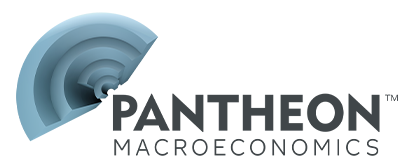US Publications
Below is a list of our US Publications for the last 5 months. If you are looking for reports older than 5 months please email info@pantheonmacro.com, or contact your account rep
Please use the filters on the right to search for a specific date or topic.
- Immigration has slowed sharply this year, but the labor force likely still is growing, slowly.
- The recent upward creep in unemployment implies labor demand has slowed by more than supply.
- Higher unemployment will squeeze wage growth and keep the pressure on the FOMC to continue easing.
Soft September sets for stage for more consumer weakness in Q4.
- Spending rose by 2.7% in Q3, but the stagnation in September likely foreshadows a very weak Q4.
- Real incomes are barely rising, and many near-real time indicators point to a sharp slowdown in growth.
- Q1 likely will be weak too, but bumper tax refunds and a pick-up in hiring will support a Q2 revival.
- We look for a 0.22% rise in the September core PCE deflator, which would keep the inflation rate at 2.9%...
- ...This will enable FOMC participants to lower their Q4 forecast, clearing the path for easing policy again.
- Initial claims plunged because seasonal adjustment has gone amiss; labor market slack is still rising.
- ADP’s numbers have considerably understated the initial official estimates of private payrolls this year.
- Reliable surveys suggest an initial private print of 75K-to-100K in November, still too soft for comfort.
- A raft of indicators point to consumer weakness in Q4. We think spending will rise by only around ½%.
- Lower immigration, AI, tariffs and federal job cuts have potential to lift the natural unemployment rate...
- ...But firms are filling openings more easily and plan to slow wage growth, pointing to excess unemployment.
- No signs of excessive unemployment by state or by sector, indicative of a still-low equilibrium rate.
Core goods inflation likely to retreat in H1 2026.
- Investors see a near-90% chance of the FOMC easing next week, back to levels before October’s meeting.
- Sometimes, the Chair moves markets during the blackout via the WSJ, but that seems unlikely now.
- Manufacturing payrolls have fallen materially in 2025, but likely aren’t a canary in the coalmine this time.
- The average effective tariff rate is currently just 12%, far short of the near-20% widely expected in spring.
- China imports have dived; more imports than expected from Canada and Mexico are USMCA-compliant.
- The plunge in the Cass Freight Index looks alarming, but it probably is overstating weakness in industry.
EXPECT AN EXTENDED FED EASING CYCLE...
- ...DRIVEN BY A WEAK LABOR MARKET AND FALLING INFLATION
Improving slightly, but investment still soft outside of tech.
Weak jobs market continues to depress consumers.
Weak September sales are a sign of what's to come.
Core PCE inflation set to undershoot the FOMC’s forecast in Q4.
- PPI and CPI data imply the core PCE deflator rose by just 0.22% in September.
- Goods price rises are slowing and retailers, especially auto retailers, are still partially absorbing the tariffs.
- The Conference Board’s consumer survey implies the labor market need more support from the FOMC.
- We look for a subpar 0.3% increase in September retail sales, consistent with real spending edging down.
- Food service sales likely fell sharply, while the more reliable indicators of control sales were soft.
- Bloomberg Second Measure data, Google search volumes and hotel room occupancy signal a weak Q4.
- Growth in average hourly earnings is resilient because fewer entry level workers are being hired...
- ...Rising unemployment, the low quits rate and a wide range of surveys all point to an underlying slowdown.
- The NY Fed’s Williams still sees room to ease policy “...in the near term”, bolstering our December call.
Boost from lower rates likely has only a bit further to run.
Payrolls flattered by the seasonals; rising unemployment keeps a December easing in play.
